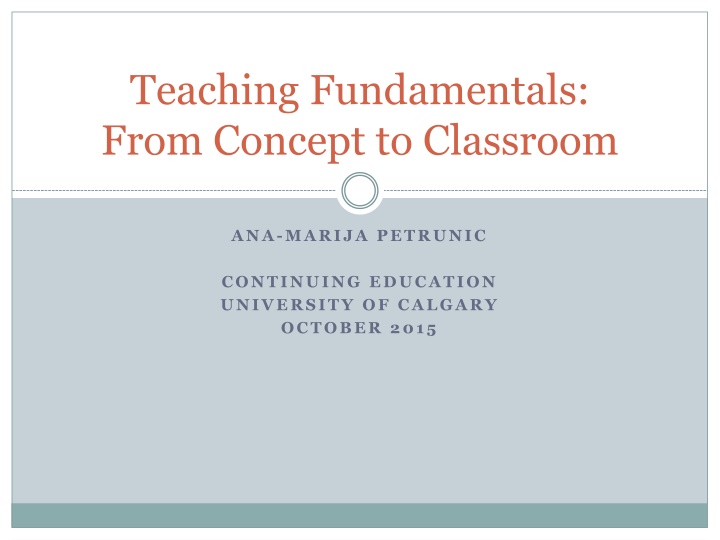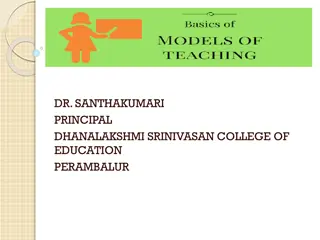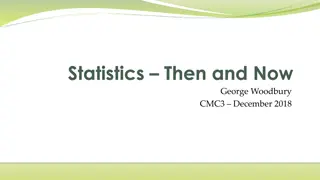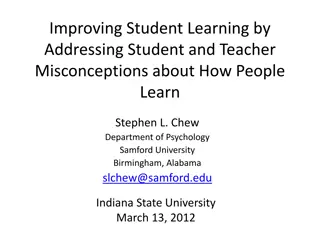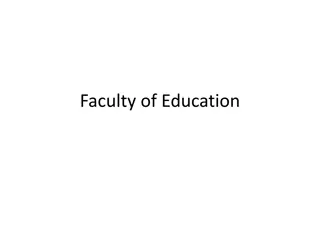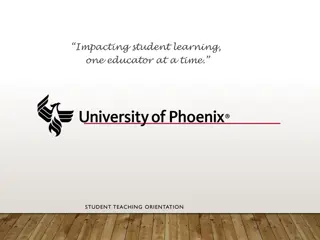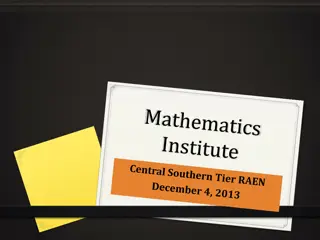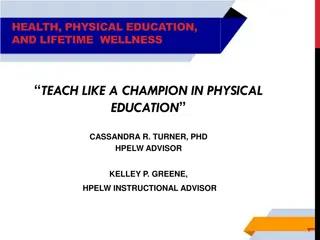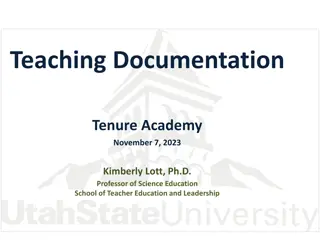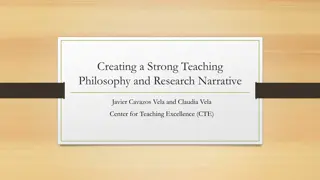Teaching Fundamentals: Key Concepts and Strategies
Essential principles for effective teaching, including assumptions, opinions on language learning, and personal teaching methods. Dive into curriculum design, lesson staging, and learner assessment to enhance teaching practices.
Download Presentation

Please find below an Image/Link to download the presentation.
The content on the website is provided AS IS for your information and personal use only. It may not be sold, licensed, or shared on other websites without obtaining consent from the author.If you encounter any issues during the download, it is possible that the publisher has removed the file from their server.
You are allowed to download the files provided on this website for personal or commercial use, subject to the condition that they are used lawfully. All files are the property of their respective owners.
The content on the website is provided AS IS for your information and personal use only. It may not be sold, licensed, or shared on other websites without obtaining consent from the author.
E N D
Presentation Transcript
Teaching Fundamentals: From Concept to Classroom ANA-MARIJA PETRUNIC CONTINUING EDUCATION UNIVERSITY OF CALGARY OCTOBER 2015
Assumptions Generalizations Insights Teaching Language and Culture
Opinions about Language Learning POPULAR BELIEFS ABOUT HOW LANGUAGES ARE LEARNED A D A P T E D F R O M : L I G H T B O W N , P . S . & S P A D A , N . ( 1 9 9 8 ) . H O W L A N G U A G E S A R E L E A R N E D . O X F O R D : O U P
1 Languages are learned mainly through imitation. 2 The most important factor in second language acquisition success is motivation. 3 The earlier a second language is introduced in school programs, the greater the likelihood of success in learning. 4 Most of the mistakes which second language learners make are due to interference from their first language. agree or disagree 5 strongly agree 4 agree 3 unsure 2 disagree 1 strongly disagree
5 Teachers should teach simple language structures before complex ones. 6 Teachers should use materials that expose students only to those language structures which they have already been taught. 7 When learners are allowed to act freely, they learn each other s mistakes. 8 Students learn what they are taught. agree or disagree 5 strongly agree 4 agree 3 unsure 2 disagree 1 strongly disagree
Personal Teaching Methods WHAT YOU BELIEVE ABOUT WHAT LANGUAGE IS HOW PEOPLE LEARN HOW TEACHING HELPS PEOPLE LEARN
Understanding Curriculum Designing Lesson Aims Staging a Lesson Assessing the Learner Teaching Fundamentals
Understanding Curriculum IMAGINE THE CLASS BEFORE IT HAPPENS PREDICT, ANTICIPATE, SEQUENCE, ORGANIZE AND SIMPLIFY
Understanding Curriculum PLAN LEARNERS Sample Speaking & Listening Syllabus and Curriculum Guide Level 1 High Beginner
Atmosphere Learners Aims Teaching Point Teaching Procedures Challenges Materials Classroom Management Planning is a Thinking Skill
Designing Lesson Aims WHAT STUDENTS WILL DO IN CLASS WHAT THE TEACHER HOPES THE STUDENTS WILL ACHIEVE
Achievement: The learners will be able to identify, describe, provide, exchange, ask, express, discuss Procedural: The learners will do/make.. a role play, a discussion, a speech, a song, an essay, a presentation Lesson Aims: Achievement or Procedural?
Staging a Lesson HELPING STUDENTS GET READY TO LEARN FACILITATING ACTIVE LEARNING REFLECTING UPON, EXTENDING AND EVALUATING LEARNING
Anticipatory Phase: Before the lesson Lead-In/Preparation Activity Set-Up Realization Phase: Running the Activity Contemplative Phase: Closing the Activity Activity Route Map: Sample Lesson Plan 1 Post-Activity
Assessing the Learner WHAT COUNTS AS LEARNING? WHAT CAN LEARNERS DO NOW? WHAT DO LEARNERS STILL NEED TO IMPROVE OR LEARN?
Learning Styles and Motivation Learner Strategies Learner Roles Learning Fundamentals
Learning Styles and Motivation WHAT MOTIVATES LEARNERS WHAT IMPLICATIONS INDIVIDUAL DIFFERENCES HAVE FOR THE TEACHER
External Motivation: Learners are studying language to pass an exam, get a promotion, enter university, please parents Internal Motivation: Learners are studying language to have fun, meet friends, set a challenge, try something new Learner Motivational Factors: The 16 Steps
Multiple Intelligence Theory Body/ Kinesthetic Intra- personal Visual/ Spatial Inter- personal Learning Styles Logical/ Mathematical Verbal/ Linguistic Naturalist Musical/ Rhythmic
Learner Strategies WHAT IS MY ROLE AS A LANGUAGE TEACHER? HOW DO I HELP LEARNERS USE STRATEGIES?
Learner Strategies in Second Language Learning Cognitive Metacognitive Planning for learning Thinking about learning Manipulating the learning material directly Monitoring production Evaluating learning
Learner Roles WHAT ROLE DOES THE LEARNER HAVE?
Learner Roles Aptitude The Learner Attitude Motivation Empathy
Teaching Fundamentals: From Concept to Classroom Ana-Marija Petrunic Reflection and Conclusion: PMI Cards ampetrun@ucalgary.ca
